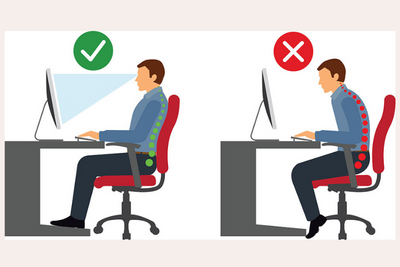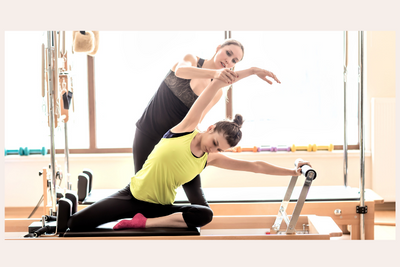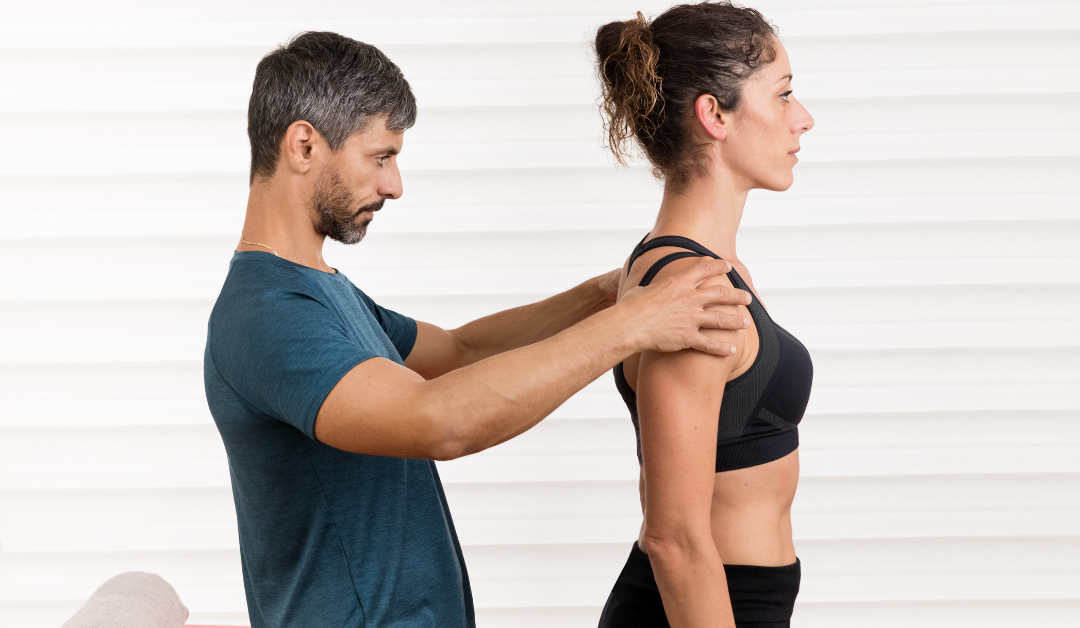Having good posture is not just about looking good. The way we sit, stand, and sleep affects the way our bodies function and how well our muscles are able to deal with things like strain.
Good posture helps to develop strength, flexibility, and balance in your body. These can lead to more energy and less muscle pain.
Good posture reduces stress on your muscles and ligaments, which reduces your risk of injury. Improving your posture also helps you become more aware of your muscles,which makes it easier to correct your own posture. As you become more aware of your body, you will be able to notice imbalances or areas of tightness you didn’t previously notice.
However, knowing how to correct your posture is just the start and is not enough to change your actual habit. Our body uses previously learnt motor patterns to perform everyday activities, so you need to retrain the way you sit, stand, walk or move in order to improve your posture.
What is Good Posture?
Posture is how you hold your body upright against gravity while standing, sitting or laying down.
Having good posture means your body is positioned correctly and your weight is evenly balanced. Your skeleton, ligaments and muscles aren’t overstretched or strained.
Your body also maintains three curves in the spine. The muscles on each side will be strong and balanced,in turn preventing back pain and allowing you to be more mobile and energetic.
When standing relaxed and breathing normally, good posture consists of having your –
- Back straight
- Head up, chin in and look straight ahead
- Shoulders relaxed
- Tummy in
- Weight balanced evenly on both feet
- Knees straight

When sitting, you also need to ensure your –
- Back is against the back of the chair
- Knees are at a right angle
- Feet are both on the floor
- Legs are not crossed
What causes Bad Posture?
Bad Posture can be caused by many activities, or lack of, including the following –
- Looking downwards at your mobile or device
- Sitting for long periods without a breaks.
- Sitting in a workstation that isn’t ergonomic
- Incorrect posture at the gym or during physical exercise
- Poor lifting technique at home or the workplace
- Poor sleeping position
Bad posture can then cause a variety of issues including back pain, headaches, neck pain, shoulder pain, hip and knee pain, just to name a few!

What are the Benefits of Good Posture?
Good posture generally makes you look great, feel more energetic and confident. It also helps prevent injury and reduce pain.
Research also suggests that improving posture boosts health.
According to a 2010 study, good posture has a lot to do with the level of stress our body can cope with. Improved postures including open shoulders and a straight spine can help with an increase in testosterone, a decrease in cortisol levels, lower stress, improved breathing and lung capacity. (Association of Psychological Science)
Also by enhancing your mood and increasing energy levels, you lower the risk of depression. (San Francisco State University)
Good posture and not sitting for long periods, can also reduce the risk of developing Type 2 Diabetes or Cardiovascular disease. (Leicester and Loughborough universities)
9 Tips to Improve your Posture
We all want good posture, however it can be so hard to achieve if you have had bad posture for a long period of time. Acquiring good posture involves learning new movements and positions and changing life-long habits, but it can be achieved by consistently following the tips below.
- Have a Posture Assessment – Your Physio is an expert at posture assessment
- Incorporate specific exercises that strengthen your core
- Invest in a foam roller and use as directed
- Set up your workstation correctly
- When using your phone, check your posture regularly
- Don’t sit still for long periods. Get up and take stretch or exercise breaks
- Invest in a good supportive pillow and mattress that suits your body
- Ensure you have a healthy diet of nutritious foods & supplements for Calcium and vitamin D
- Consider Pilates and Yoga to help stretch, improve flexibility and strengthen your core

Specific Exercises to Improve Posture
Specific exercises to improve your posture can include –
- Child’s Pose – Watch our Video
- Forward Fold
- Chest Opener
- Plank
- Downward facing dog
- Pigeon pose
- Thoracic spine rotation
- Glute squeezes
- Isometric rows
How you can Achieve Good Posture!
Seeing your Physiotherapist to identify posture imbalances is a great idea. They are trained professionals that can conduct a thorough assessment, provide hands on treatment and posture correction and muscle strengthening exercises to reactivate your postural muscles. They may also use postural taping, provide braces or supports to assist with everyday life, or recommend a Pilates program to further support your posture correction.
For more information or to book, please call us on 3869 1099 or BOOK ONLINE.

